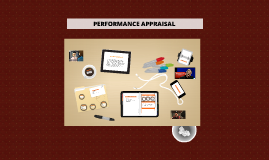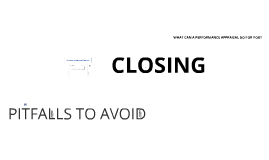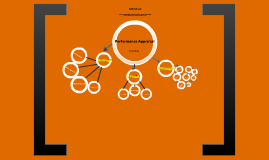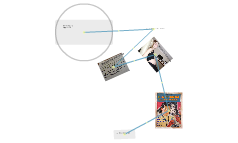Performance Appraisal
Transcript: Purpose Potential Benefits PERFORMANCE APPRAISAL Notes IMPROVING PERFORMANCE APPRAISALS GAME!!! Formal annual performance appraisals Probationary reviews Informal one-to-one review discussions Counselling meetings Observation on the job Skill- or job-related tests Assignment or task followed by review, including secondments (temporary job cover or transfer) Assessment centres, including observed group exercises, tests presentations, etc. Survey of opinion of others who have dealings with the individual Psychometric tests and other behavioural assessments Graphology (handwriting analysis) -Immediately after, record the plans made and points requiring follow-up - Provide a copy for the employee. - Evaluate your own performance. What I did well? Could have done better? Learned about the employee? Learned about myself Equality Regulation 2006 A Quick Guide for Managers -Training - Proving Feedbacks to Raters - Subordinate Participation Why Employees Dislike Performance Aprraisal Types -Rating Bias -Hypocrisy - Poor Informal Feedback - Poor Communication during Formal Feedback Sessions - Rater Errors Conducting - Give employee advance notice so that they can prepare for the discussion - Review the position's responsibilities and standards - Review the employee's job performance for the past year - Identify potential development areas that can be addresses through training and special projects - Set aside adequate block of uninterruted time to permit a full and complete discussion Following Up + Facilitation of Communication + Enhancement of employee focus through promoting trust + Goal Setting and desired performance reinforcement + Performance Improvement + Determination of Training needs -is a method by which the job performance of an employee is evaluated. Performance appraisals are a part of career development and consist of regular reviews of employee performance within organizations. - is a systematic and periodic process that assesses an individual employee’s job performance and productivity in relation to certain pre-established criteria and organizational objectives. Process Performance Appraisal - Detrimental to quality improvement - Negative Perceptions - Errors - Legal Issues - Performance Goals - Derail Merit Pay or Performance-Based Pay Preparing - Make sure your focus is on the person and not on distractions. - Ask employee to review his/her job performance for the past year - Keep the focus on job performance and related factors, not personality. - Discuss job requirements, employee strengths, accomplishments and improvement needs. - Be prepared to cite observations for each point discussed. - Reach agreement on appropriate goals, development plans and timetables - Summarize what has been discuss and end on a positive note Helps develop individuals, improve organizational performance, and feed into business planning. Enable management and monitoring of standards, agreeing expectations and objectives, and delegation of responsibilities and tasks. Generally review each individual's performance against objectives and standards for the trading year, agreed at the previous appraisal meeting. Essential for career and succession planning - for individuals, crucial jobs, and for the organization as a whole. Important for staff motivation, attitude and behaviour development, communicating and aligning individual and organizational aims, and fostering positive relationships between management and staff. Provide a formal, recorded, regular review of an individual's performance, and a plan for future development. Treating people fairly, regardless of age, is central to the principles of ethical business and ethical organisations. - Prepare - Inform - Venue - Layout - Introduction - Review and Measure - Agree an action plan - Agree specific objectives - Agree necessary support - Invite any other points or questions - Close positively - Record main points, agreed actions and follow-up Potential Complications Thank You for Listening!!! :">

















